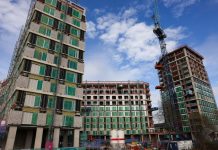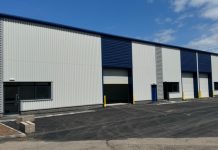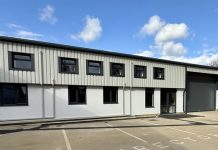David Thomas, Partner at Reading-based property consultants, Vail Williams LLP, discusses the merits of KonMari’ing your office space:
As the Marie Kondo decluttering trend continues to gain momentum, our occupier advisory team offers their thoughts on how an adaption of these principles can make your office environment more cost efficient and less cluttered, whilst inspiring creativity, reducing stress and, ultimately, creating a more productive workforce.
If you are yet to experience the movement known as KonMari-ing, it is the latest trend in reducing stress and revolutionising your outlook on life by getting rid of anything that doesn’t spark joy.
Inspired by Marie Condo, the art of KonMari to tidy your space, isn’t a new concept.
It was William Morris who in 1880 said: ‘Have nothing in your houses that you do not know to be useful, or believe to be beautiful.’
But what has this got to do with your office space?
We have all heard the story of the office worker who went on holiday, and their colleagues trying to find a document on his cluttered desk whilst he was away.
So frustrated were they with the mess, that once they found the document, they placed everything else in a bin bag under their desk. On their return from leave, the office worker was outraged, yet the bin bag laid untouched under their desk six months later.
Take a moment to consider your office environment.
What around you helps or hinders your working day? What around you is used on a daily basis or has sat unused for months on end?
Observe how your space is used – has technology advancement meant that your office environment is no longer doing what it was originally designed for?
After employment costs, real estate is invariably the second highest cost for any business when you take account of rent, business rates, service charges, cleaning and utilities.
Typically, these costs are broken down on a rate per square foot. If your office space is being used inefficiently, you’re effectively committing the property equivalent of driving around with a ton of bricks in your boot that you forgot about, wondering why your fuel consumption has gone down.
When advising clients who are embarking on an office change project, we always ask to visit the clients site to understand how they are using the space.
This allows us to deep dive into what issues our clients face – be it running out of space, issues with noise, a lack of meeting rooms, or a desire to change working practices or increase collaboration.
In these situations, it’s important to consider include file storage – what is taking up space which could be archived, digitised or dumped.
How much space could be released by going through this process and how much could you reduce stress by removing latent or historic project documentation?
When it comes to desks, are you reading this on a laptop on a corner desk which was originally designed for a PC with a cathode ray monitor – a change from these desks to bench desking can save over 25% of space required.
What about how the space is being used? With the average usage statistics being a circa 60% occupancy at any one time, can you introduce a more agile working environment to allow teams to collaborate more effectively? Do staff members who now only work part-time really need their own desk, complete with pictures and various accessories?
How are your meeting rooms being used? Are your 8-person meeting rooms fully booked by 2-person meetings?
What about distractions? Does your sales team, who are constantly on the phone and were temporarily four years ago next to your accounts team four years ago, still need to be there?
What in your office doesn’t spark joy, or isn’t useful?
What can you do to take responsibility for making your space more efficient and aligned to your organisations needs?
What could be the benefits of improving your environment and increasing productivity? Perhaps it’s time to KonMari your office?























